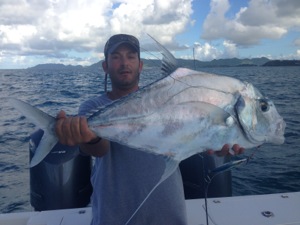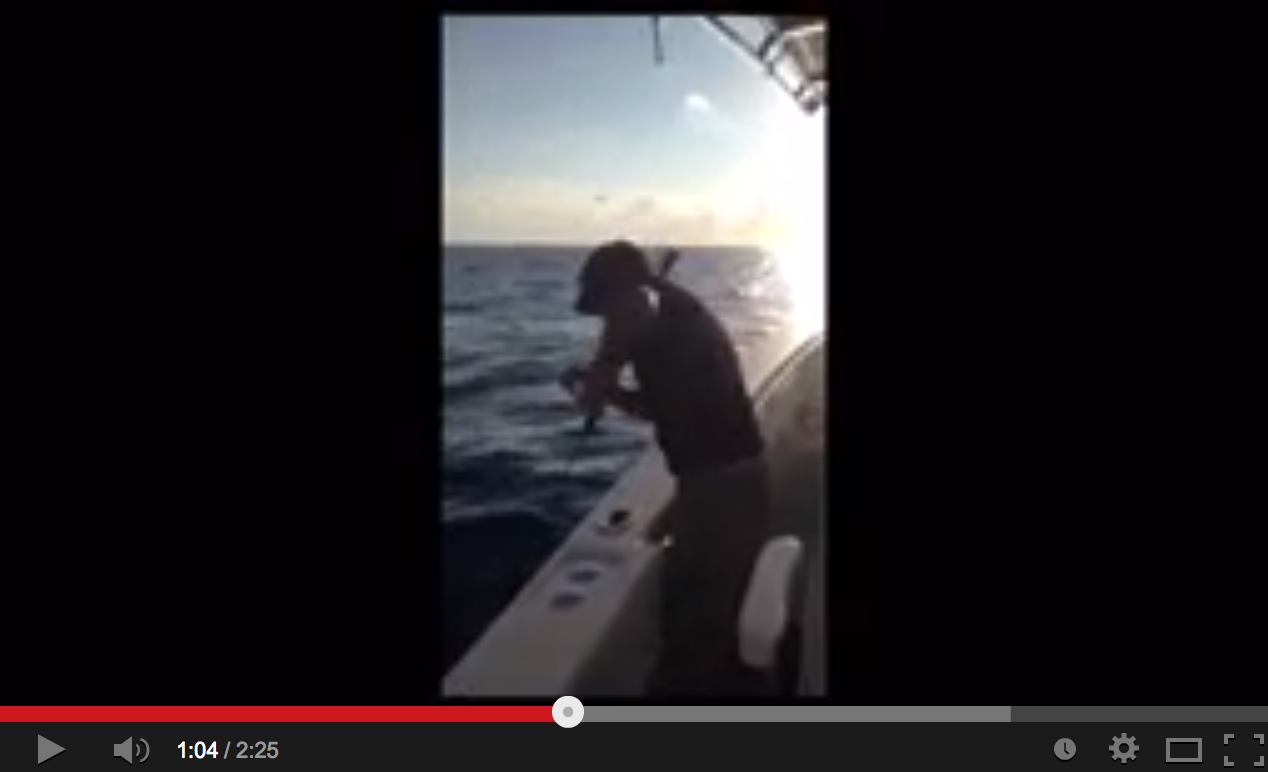#2 Report from Sam & Laurent in Saint-Martin
Here comes the other story from Samuel on the Caribbean trip.
[colored_box variation=”teal”]
 I just read the report Laurent made, this guy is too modest.
I just read the report Laurent made, this guy is too modest.
What he didn’t tell you is that our jigging session was maximum 2 hours, and during that time we got contact around ten times. We didn’t convert all contacts to catches because of all these fish’s teeth (shark, wahoo, king fish, Spanish Mackerel…) but also maybe for another reason: the hook-set needs to be ultra quick or the fish swallows the jig and the game is over. That sounds obvious, but not so easy to do, you need to be well concentrated during the whole game especially when you crank after the fall and during the fall (naturally you lose concentration during the fall and your line is more loose and relaxed).
Of course these water’s have a high density, but for comparison when I used to go high speed jigging in the past years with Laurent, we got 60% less bites.
I am now completely convinced by this game, except for depths of more than 100m, I found it very difficult to make the jig dance (slow and very slow pitch), even with the 603-6.
[/colored_box]
Thank you Samuel for your great insights!
Yes, the falling is so important. You get so many contacts during the fall. You have just learned that so quickly because you didn’t want to lose your jigs to the toothed fish. But it is very essential in any situation.
If you count your jerks, most anglers start counting 1 at the lift, 2 at the start of the fall, 3 at the bottom of the fall, 4 at the start of the lift. Change that to counting 1 at the falling. It would change your whole perception.
Always keep just a bit of tension to the line during the fall, just enough for you to be able to listen. Too much tension would change the falling actions.
For the counter-measures for the toothed fish, you have probably read this article.
[fancy_link link=”http://anglers-secrets.com/v2020/what-to-do-with-slashers-like-narrow-barred-mackerels-and-wahoos/” variation=”orange”]What to do with slashers like Narrow Barred Mackerels and Wahoos[/fancy_link]
 When you see them, they are always in a pack. I would put on the wire leader or get out of that area.
When you see them, they are always in a pack. I would put on the wire leader or get out of that area.
Yes, I understand sometimes it’s hard to jig at 100m of water from a sea-anchored boat. The currents and the wind make it even harder sometimes too. You are using the best slow pitch rod, the best jigging reel with enough speed, the finest line you can. The only excuse left would be boating.
Or, maybe you can change the perception of “dance the jig”. Even from a spankered boat, sometimes it’s hard to feel the jig slashing through the water, released for a hang-time and falling that you would feel in the shallow. It becomes impossible when you have multiple layers of complex currents.
But that is not the only way to dance. Having the jig on its side is the key. You can do that with the uplift that I just described. But you can also do that by falling. Release the tension you get with the uplift like suddenly you are free falling with your rod, then the jig starts falling sliding on its side. Also, the change of pace is what triggers the fish to make a bite. Slow lifting and fast falling is one way to achieve that. You can start counting 1 at the fall. This is the technique we do in the complex currents here.
Related Posts
Leave a Reply Cancel reply
Categories
- 1. SPJ (57)
- 1-1. Principles (9)
- 1-2. Techniques (11)
- 1-3. Setup (17)
- 1-4. FAQ (19)
- 1-5. Tackles (3)
- 1-6. Video Gallery (2)
- 2. Other Offshore Games (5)
- 3. Fishing Report (105)
- 3-1. Totos (25)
- 3-2. Readers (72)
- 4. Fish Cooking (19)
- 4-1. Iki-Jime (3)
- 4-2. The Art of Sashimi (5)
- 4-3. Recipe (7)
- 4-4. Seasoning (3)
- 5. Fishing Charter (6)
- Fish (12)



